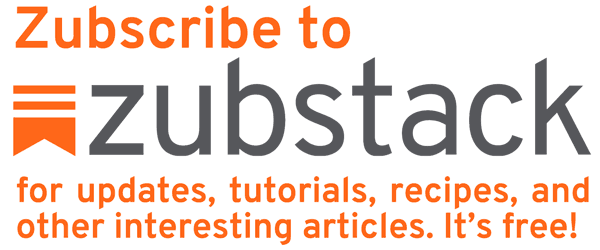Thank you to everyone who subscribed (zubscribed, I know, I know…) or shared the link to this newsletter with others. I deeply appreciate it.
Dream about being out for dinner at a truck stop diner.
Our smiling server tells us every meal comes with a free side dish, but there's only one choice and it's called "despairagus"…
…I'm going to have to work that into a story at some point.
— Jim Zub
(@JimZub) March 15, 2023
Legacy Numbering?
For my own ridiculous bookkeeping, I counted up the old newsletter emails before I switched over to a blog format and it looks like there were 130 ‘Zubby Newsletter’ releases before this new version I’m calling Zubstack. So, welcome to #132.
When I collected comics as a kid I loved the idea of big numbers on the cover. Titles like Fantastic Four, Avengers, or Detective Comics had 3-digits worth of issues and that just seemed incredible to me. Jumping into the midst of those universes felt more real because the timeline kept moving forward as their history stretched out behind them in a way that was easy to measure – month after month with the issue number on those long-running titles.
The first issue of Amazing Spider-Man I remember buying is #231. It wasn’t a ‘special’ issue or jumping on point, yet it hooked me so damn much.
I knew Spider-Man from the old Bakshi cartoon on Saturday mornings and seeing him in a kids magazine and TV show called the Electric Company. The cover of #231, with a villain called the Cobra trying to kill our hero as he’s perched precariously on a wall, was dark and exciting in ways I’d never seen in the cartoon. I couldn’t wait to dive in.

I collected Amazing Spider-Man from #231 through to #365 and bought a bunch of back issues and Marvel Tales reprint issues to try and fill-in as many gaps as I could afford. My brother and I collected every other Marvel super hero book we could get our hands on, especially Uncanny X-Men, Doctor Strange, Avengers, Fantastic Four, Alpha Flight, and Conan the Barbarian.
By 1992 my tastes had changed and I shifted over to black & white indie comics, Vertigo books, and manga (with only a handful of translated Japanese comics available in North America at that time). I eventually found my way back to collecting super hero comics in 2000 with Ultimate Spider-Man and The Authority.
I’ve still never had the pleasure of writing an issue of Amazing Spider-Man, but contributing to legacy issues of The Avengers (#675-690, 708-717), Invincible Iron Man (#609-611,614-616), and Conan the Barbarian (#288-300) is a huge honor.
Conan the Barbarian #0 – Free Comic Book Day
Speaking of Conan, I’m still deeply connected to the Hyborian Age and will be relaunching Conan the Barbarian this summer with Titan Comics and Heroic Signatures. This week I received advance copies of our Free Comic Book Day zero issue (which you’ll be able to pick up at your favorite local comic shop on Saturday, May 6th) and, honestly, I can’t believe how incredible it turned out.
Rob De La Torre delivers powerful pulpy line work reminiscent of the best who have ever portrayed the Cimmerian, José Villarrubia’s stirring colors add atmosphere to match, Richard Starkings brings brilliant lettering to make each page flow flawlessly, and editor Matt Murray somehow managed to keep us all on schedule! It’s genuinely a dream team on a dream book and I am so damn proud of what we’ve put together.
I’m not allowed to show interior pages yet, but once you see them I think you’ll agree that this book’s an absolute stunner. We’re pulling out all the stops. Do not miss it, my friends.
Conan the Barbarian #0 in May.
Conan the Barbarian #1 in July, and monthly onward from there.
Chez Zub’s
Quite a few people asked if I’d be including any recipes here in this newsletter. For those who don’t know, on Twitter I’ll post up the occasional photo of meals I put together for Stacy and I and people there seem to really enjoy it.
During the pandemic I made a concerted effort to learn how to cook new things and it became a surprisingly fun hobby. Without trying to sound too dramatic, when I’m cooking I push away a lot of the stresses of the outside world and just focus on the immediacy of what I’m doing in the kitchen – trying to make something taste great.
Learning to cook dishes we missed because we couldn’t travel or meals I’ve always wanted to wrap my head around has been both a stress reliever and confidence builder.
So, with that in mind, I hope you don’t mind if I include a recipe every so often. More value for your zubscription.
We’ll start with a classic from my Ukrainian grandmother – homemade cheese and potato pierogis. My grandma’s dough recipe is a bit different than other ones I’ve seen online and the way it tastes is a deep well of nostalgia for me.
Click through to this tweet thread I put together back in 2020 for a step-by-step breakdown of the process with photos. If you’ve only eaten factory-made pierogis you bought at the grocery store, you have no idea what you’ve been missing. These are comfort food on another level. Pure bliss.
Today @stacyking and I are making pierogies.
Step 1 was last night. We peeled a batch of yellow potatoes, boiled them until very soft, then mashed them with grated old cheddar and parsley.
Important: Save that potato water! The starchy water will be used later in the dough. pic.twitter.com/x0asERDd1u
— Jim Zub
(@JimZub) April 11, 2020
If you get a chance to make a batch, send me photos!
Here’s a text-only version of grandma’s recipe:
Classic Pierogis (Cheese + Potato)
- 3-4 large yellow potatoes
- 2-3 eggs
- 4 cups of all purpose flour
- block of old cheddar cheese
- sprig of chopped parsley
- reserved potato water
- salt
- serve with sour cream, salt and pepper
Step 1: Peel a batch of yellow potatoes, chop them up, and boil them until very soft, then strain and mash the potatoes together with grated old cheddar and some chopped parsley.
Important – Save that potato water! Strain out any lumps and set it aside. The starchy water will be used later in the dough.
Step 2: Once the potato-cheese mixture has cooled, roll them into little balls and store them in the fridge. Each of these little cheese balls will be the filling for one pierogi.
You can do this whole process in one day, but getting the filling done the night before saves a bit of hassle juggling both parts (dough and filling) at once in the kitchen.
Step 3: The dough ingredients are simple-
- All-purpose white flour (Grandma swears by Five Roses brand, but any all-purpose non-cake flour should work)
- 2-3 eggs
- Strained potato water
- Pinch of salt
Beat the eggs. Add a bit of potato water.
Step 4: Put 4 cups of flour on your work surface. Make a well. Pour liquid in.
Step 5: Incorporate together and knead the dough. Too sticky? Add flour. Too dry? Add a bit of potato water.
Step 6: Knead the dough for 5-10 minutes. Throw the dough ball down on the counter a couple times to get out any air bubbles. If you cut the dough in half, you shouldn’t see any air bubbles.
Cover with plastic wrap and let the dough rest for 40-60 min.
Step 7: Separate the dough into manageable sections and roll out thin with a bit of extra flour so it doesn’t stick.
Step 8: Use a wide glass, mug, or circle template to cut circles.
Step 9: Flatten a filling ball a bit in the middle, then fold dough over it and pinch the dough closed.
If the dough doesn’t seal, use a bit of water along the edge and press together.
Step 10: Set the pierogis in rows on parchment paper and put those trays in the freezer. If you need to stack them, put a sheet of parchment paper between each set to keep them separated. Once the pierogis are frozen, you can put them in freezer bags all together or portioned out.
To prepare- Boil in salted water for 6-7 minutes. Strain and toss with butter. Serve with sour cream, salt, pepper and a bit of chopped dill (if you want to be extra fancy).
If you have any left over after boiling them (I don’t know how that could happen, but let’s pretend you didn’t scarf them all down in one go) the best way to reheat them is to fry them with some butter or bacon. The crispy outside and warm potato inside is unstoppable.
Links and Other Things
My students at Seneca are in the midst of a project where they’re drawing a street scene with buildings. Being able to quickly and accurately split surfaces into equal perspective sections is an absolute must when you’re building buildings (for plotting floors, doors, windows, or other repeated architectural features) and, when I looked on YouTube I couldn’t find a straight forward tutorial on the process I could refer them to after the lecture, so I made my own:
Also, one of my TAs pointed me toward the website of layout artist Steve Lowtwait. Steve has an exhaustive portfolio of professional background line art and some wonderful tutorials and step-by-step examples of how he translates storyboard panels into full backgrounds for production.
How to draw dynamic perspective with a simple Photoshop trick.
Plus tips on drawing buildings.
An environment design step-by-step thread: pic.twitter.com/tRviD8GoYS
— Steve ✦ Lowtwait (@Lowtwait) September 15, 2020
It’s a goldmine of reference for students or any other artists who want to improve their environmental art.
That should cover it for this time.
If you have any questions or comments, please let me know!
Jim







 Zub on Amazon
Zub on Amazon Zub on Instagram
Zub on Instagram Zub on Twitter
Zub on Twitter
0 Comments.